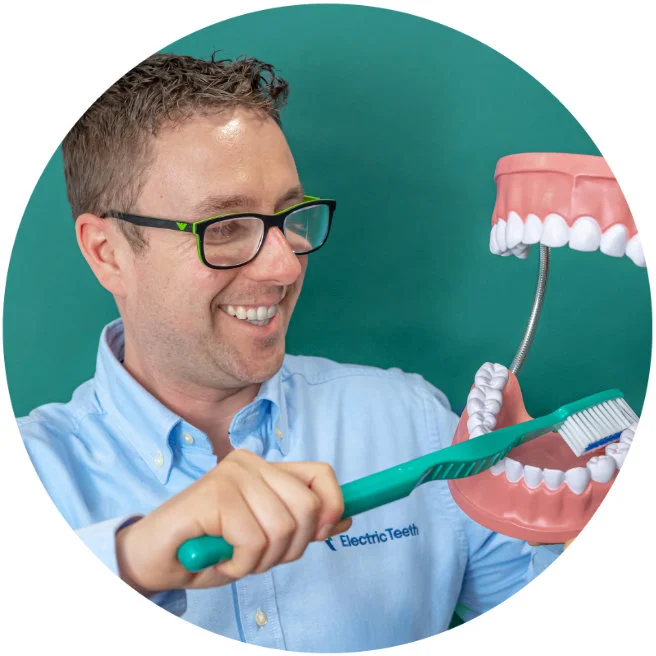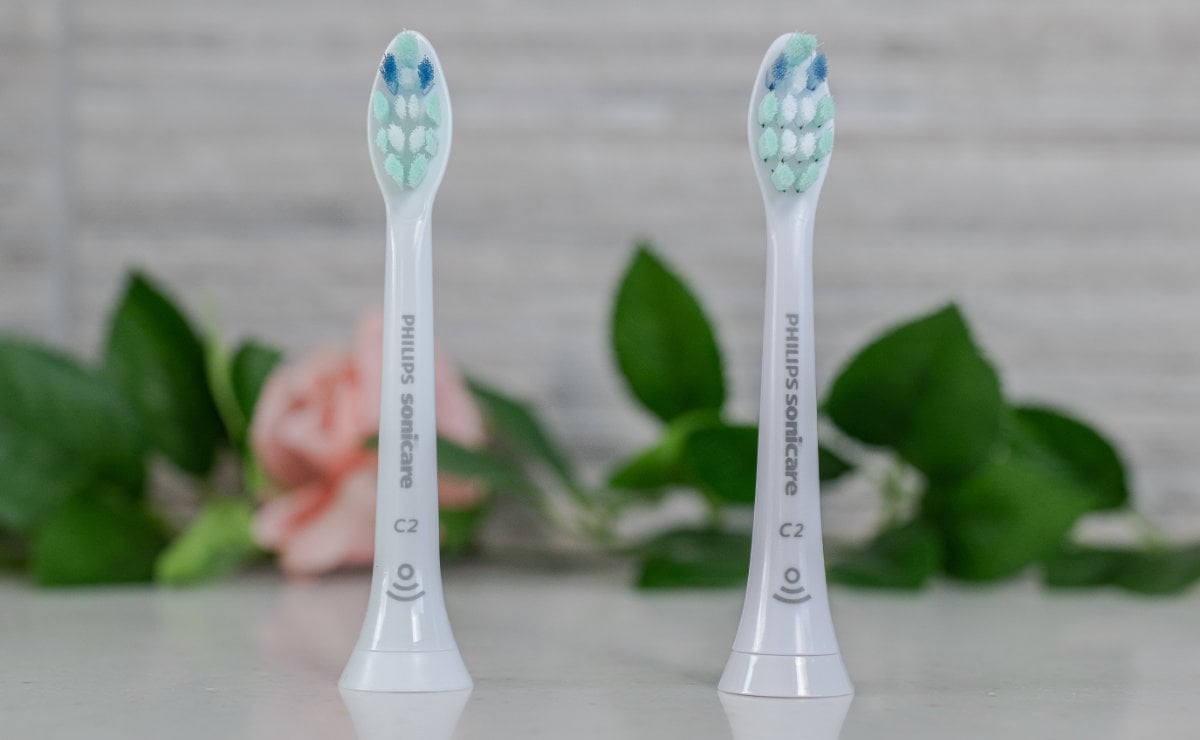
Key takeaways
It is possible to recycle electric toothbrush heads via specialist programmes and take back schemes.
But at the moment they can't be recycled with your normal household waste.
As with manual toothbrushes, this is because they are made of a mixture of materials, which are difficult to separate.
They also use nylon bristles, which cannot be recycled in the mainstream facilities currently available.
There are some toothbrush heads which advertise themselves as more environmentally friendly, but at the moment there isn’t much evidence when it comes to supporting this. I’ll go into more detail below.
Ultimately, to recycle an electric toothbrush head, it will need to go to a specialist facility.
You can do this via schemes such as TerraCycle or through manufacturer take back schemes.
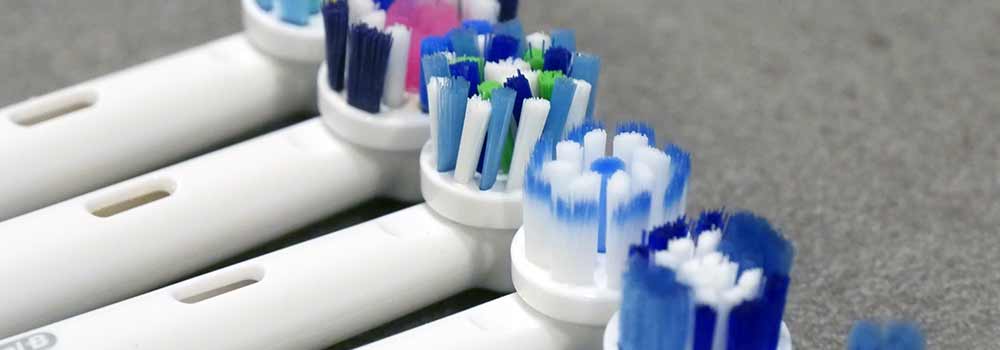
Recycling brush heads from Oral-B, Sonicare & Colgate
There are many different electric toothbrush manufacturers. The most widely known are Oral-B/Braun/Crest, Philips/Sonicare and Colgate.
Each one has its own specific toothbrush heads which only fit its electric toothbrushes.
TerraCycle, a specialist recycling company, works together with brands to provide free recycling programmes for oral care products and packaging (as well as other hard to recycle items).
TerraCycle rewards collectors with donations to schools, charities and non profit organisations.
Colgate
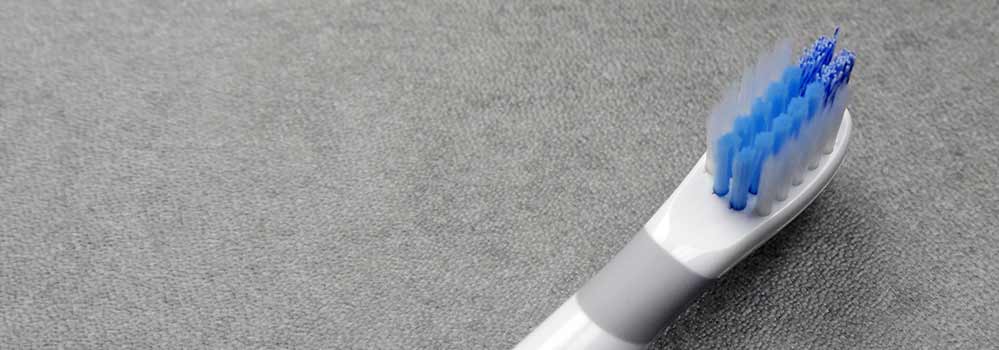
Colgate does have a partnership with TerraCycle.
You can take your Colgate toothbrush heads to the participating location for the Colgate TerraCycle scheme or the Philips TerraCycle scheme.
Alternatively you can order your own Zero Waste Box directly from TerraCycle and recycle your Colgate toothbrush heads there.
Philips Sonicare
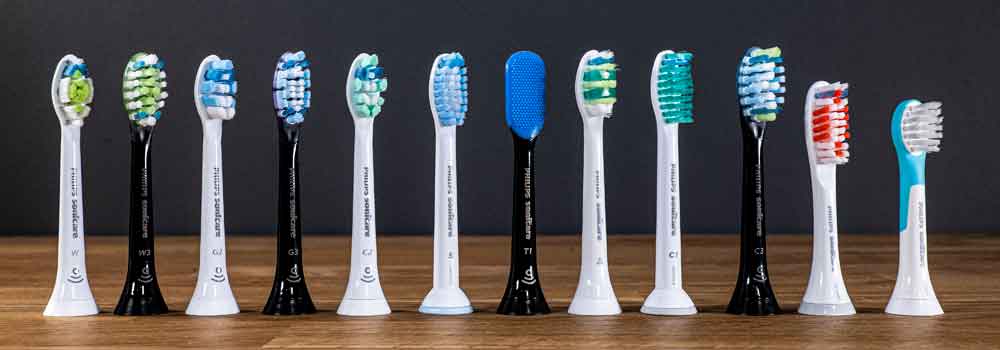
Philips/Sonicare also has a partnership with TerraCycle.
You can take your Sonicare heads to the participating location for the Philips TerraCycle scheme or the Colgate TerraCycle scheme.
You can also recycle your Philips toothbrush heads using your own Zero Waste Box.
There are still opportunities to start new collection points for the Philips scheme.
Oral-B
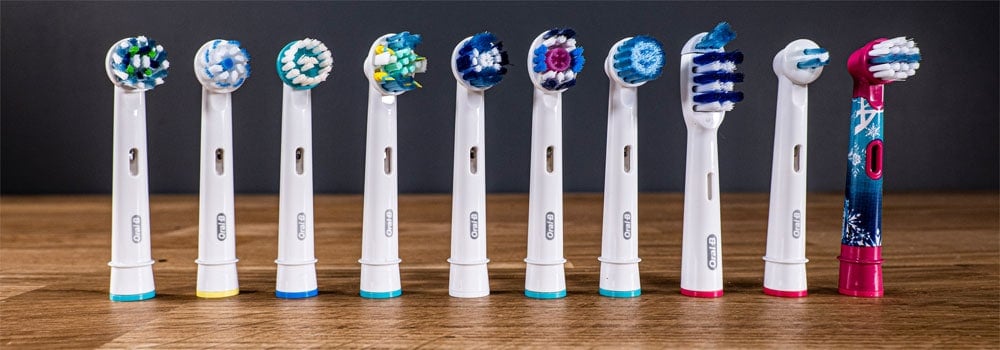
You can recycle your Oral-B toothbrush heads through the Colgate TerraCycle scheme. Just drop them off at the registered location (which you can find on the TerraCycle website).
Toothbrush manufacturers that offer take back schemes
There are now some manufacturers that allow you to send brush heads back for recycling when you purchase their electric toothbrush.
We will keep this list updated as more becomes available.
SURI
When you buy SURI, the cost of sending brush heads back is already factored into the price. They include a prepaid mailer bag when you buy the brush so that you can send brush heads back when you are finished with them.
They ask that you collect at least 3 and send them back together.
SURI will then recycle the brush heads with a specialist recycler. Their brush heads are made from cornstarch PLA and the plan is to industrially compost them, rather than recycle them, once facilities are available.
Find out more in our SURI toothbrush review.
Brush head manufacturers offering take back schemes
There are also several brush head manufacturers that offer take back systems. They accept returns of their own products, but not brushes which are bought elsewhere.
They have priced the recycling process into their brush heads, so normally the return is free.
You post the items back to the company you ordered from, and they arrange for recycling.
This simplifies the recycling process for you, as the company has done the legwork and knows where to send your brush to. These are convenient, as you just send the toothbrush back in the post.
These are sometimes advertised as “closed loop” systems. So long as all of the materials put into the system are usable at the end, this is true.
The companies offering the take back systems rarely give evidence to support these claims and so they should be taken with a pinch of salt.
Some of the companies simply pass your items on to TerraCycle, but charge you for postage so you are losing money — do beware of that.
In fact, the overall benefit of this model is still unproven. In the US Radius actually opted against this model because it calculated that shipping products back negated the benefits. Their calculations have not been published, though.
Also consider that even though the brush heads are being “recycled”, the overall process of owning an electric toothbrush still has a significant impact on the environment, especially compared to owning a manual one.
LiveCoCo
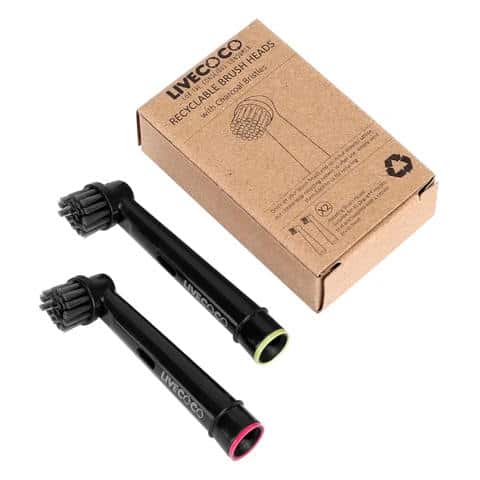
LiveCoCo widely advertises their brushes as being eco-friendly.
Yes, they offer a take back scheme with free returns for recycling. But the actual brushes are not necessarily more environmentally friendly. There is nothing about the materials used in the brush head itself that makes it better than a regular electric toothbrush head.
Live Coco either enclose an envelope (if you have ordered 12 toothbrush heads) or offer the "cheapest postage cost applicable for your country after having received your return: and provide more information here. They only accept their own branded toothbrush heads.
Their website says they have created their own “Closed-Loop Recycling System rather than relying on any third party recycling scheme”. But they also say they collect the brushes to send off in bulk to be recycled. It isn’t clear where they actually send them, and it’s misleading to call this their own closed loop system seeing as they are outsourcing!
They have an address for the UK, USA and Australia.
But when it comes to the brush itself, they do not provide any information on the exact materials used. There is nothing to make it more eco-friendly than most manufacturers.
The packaging is, however, plastic free.
LiveCoCo is also slightly missing the point with this article about whether or not electric toothbrushes are the most sustainable option. The article, released in 2021, misses out on recent studies which have proven electric toothbrushes to be the least environmentally friendly option.
Overall, it’s great to see a company doing something. But you could buy toothbrush heads from anywhere and recycle them via a TerraCycle scheme.
Brushd
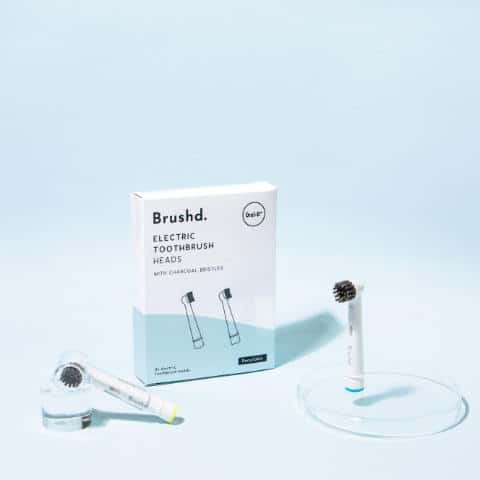
Brushd appears to work in a very similar way to LiveCoCo.
When you buy toothbrush heads from them they also send you a return envelope. They only accept their own branded toothbrush heads.
You return your used brush heads to them. They then send them on for recycling, but they do not say where.
As a company, Brushd appears to have some additional environmentally friendly policies, like planting trees for subscription orders.
Again though, there is nothing about the toothbrushes themselves that make them more sustainable. You could buy toothbrush heads from anywhere and recycle them via a Terracycle scheme instead of using Brushd.
Georganics
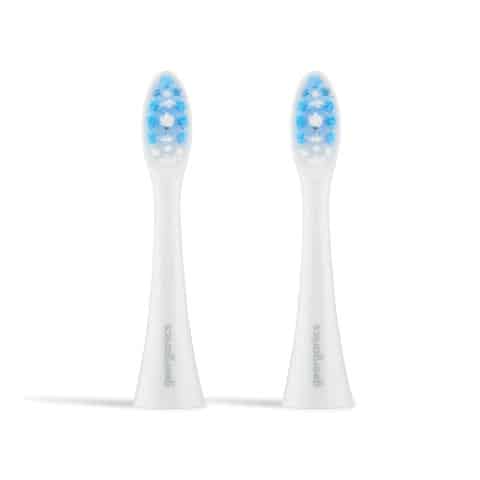
Georganics is another UK based brand who will accept returns of their electric toothbrush heads. These toothbrush heads only fit their electric toothbrush.
They then send them on to a “partner recycling centre”.
Generally, Georganics are aiming to be a sustainable company. They have a wide range of environmentally friendly dental products, have plastic free packaging, and also have a number of certifications to support their claims. They are also a charitable company, with 1% of profits going to charity via their 1% for the Planet membership.
As with Brushd and LiveCoCo, they only accept their own products as returns to recycle. And Georganics only produce electric toothbrush heads for their own electric toothbrush.
Do "eco-friendly electric toothbrush heads" exist?
Being recyclable does not automatically make something environmentally friendly.
This is true for electric toothbrush heads too.
There are some alternative materials used for toothbrush heads which manufacturers will tell you make them eco-friendly.
One of the best options for an environmentally friendly toothbrush head would be to use recycled plastic material. The only example of this I have come across are these Green Clean Toothbrush Heads from Jordan, although they are not widely available at the moment.
Yes, there can be a slight improvement by avoiding certain materials. But some materials actually make the recycling process more difficult.
For example, bio-based plastics, where the starting material is plant-based as opposed to oil based, is a reasonable alternative. There is less impact on the environment in terms of taking a finite resource and using a renewable resource instead. This can reduce carbon dioxide emissions and reduce the need for damaging drilling for petroleum.
Bio-based plastics are an alternative to petroleum based plastics, but do not help us to reduce our reliance on difficult to recycle materials.
The terms “plant-based” and “plastic free” are not regulated and are often used misleadingly to make you think a product is more environmentally friendly than it is.
A plastic made from plants is still a plastic. It still needs to be recycled effectively when you are finished, otherwise it can contaminate land and water sources.
Some plastics are labelled as “biodegradable”. Firstly, these do not have certification to confirm this. Secondly, when placed into regular recycling streams these different types of plastic can damage the equipment.
Examples of bio-based plastic being used for electric toothbrush heads include:
- Plus Ultra
- TIO brush heads — we reviewed these a long time ago and the heads were unavailable for quite a while, but are now back on sale here.
What about bamboo electric toothbrush heads?
Other materials for electric toothbrush heads have also been proposed. As is common with dental products, bamboo electric toothbrush heads are now starting to make an appearance.
One concern with bamboo is that it is not necessarily the most environmentally friendly material, despite being advertised as so.
Switching out the material of the handle only solves one problem: less plastic is used. Bamboo can be difficult to recycle unless organic recycling is available. Nylon bristles will still be a problem.
There is no guarantee that the bamboo is sustainably sourced either. Yes, it is a renewable material. But where the bamboo comes from will have a massive contribution to the environment.
Examples of bamboo electric toothbrush heads include:
- Boo heads (Philips Sonicare compatible)
- Organically Epic (Philips Sonicare compatible)
- Planet Natura (Phillips Sonicare compatible)
- Humble Co (Phillips Sonicare compatible)
- Pure Earth (Phillips Sonicare compatible)
Nylon bristles are the most widely tested. It is important to have the right bristles to ensure effective cleaning and avoid damage on the gums and teeth.
It is possible to have a bio-based nylon, but alternative compostable materials are not currently recommended.
Overall, an electric toothbrush is a less environmentally friendly option than a manual toothbrush. This is because of the additional resources needed to make and transport them, as well as the electricity required to charge them.
What we would like to see from brands that sell brush heads:
Toothbrush heads are difficult to recycle, and part of that is unavoidable.
But there are some things that we would like to see from brands who sell such products.
Brands offering take back schemes
- Greater transparency about what their products are made of
- Are they made from sustainable alternatives?
- Explaining why they have chosen the materials they use.
- Information about where the toothbrush heads are made.
- Certification to support any environmental claims.
- More evidence and detail of the recycling process they undertake.
- Is processing in house or outsourced?
- If outsourced, then to who?
- If it is outsourced, why should you choose that company over any other and then just use TerraCycle?
- Evidence about how their take back scheme compares to TerraCycle.
- More transparency about the sustainability efforts of the company e.g. using renewable energy to power the factories.
- Create products which are easy to recycle in kerbside recycling facilities.
Brands with TerraCycle partnerships
- Better availability. Taking Colgate as an example, it is a good start but new participants are no longer being accepted. Even though there are 755 drop-off locations, this still equates to only a handful in each county, so for many people they are still not practical to use.
- Clearer explanation of which products are/are not accepted - as there is variation across different sponsored programmes.
- Transparency about what the sponsors gain from the partnerships and the cost of running the programmes vs profits from resale of recycled plastic.
Brands that don’t yet offer recycling
- Fund or create schemes that make it simpler for users to send their products for recycling.
- Create products which are easy to recycle in kerbside recycling facilities.


